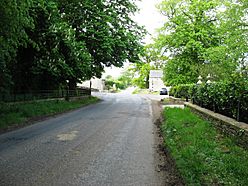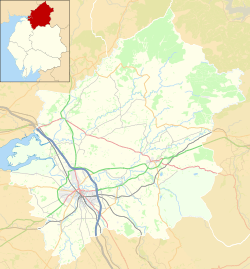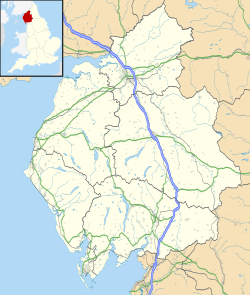Milecastle 73 facts for kids
Quick facts for kids Milecastle 73 |
|
|---|---|

Milecastle 73 lies north of the road leading west out of Burgh by Sands
|
|
| Type | Milecastle |
| Location | |
| Coordinates | 54°55′27″N 3°04′43″W / 54.924271°N 3.078538°W |
| County | Cumbria |
| Country | England |
Milecastle 73 (Dykesfield) was one of many small forts, called milecastles, built along Hadrian's Wall. These forts were placed about one Roman mile apart. They helped the Roman soldiers guard the wall.
Contents
Discovering Milecastle 73
Milecastle 73 is located about one mile west of a village called Burgh by Sands. Today, you cannot see any parts of it above the ground.
Early Discoveries
Archaeologists first found Milecastle 73 in 1948. They dug up parts of it to learn more. They found that the inside of the fort measured about 19.2 meters from north to south. It was 18.7 meters from east to west. The walls of this fort were about 2 meters thick.
Modern Surveys
Later, the milecastle was found again using a special method. This method is called a geophysical survey. It helps archaeologists "see" things underground without digging. The survey showed that the outside of the fort was larger. It measured 24.75 meters north to south and 26 meters east to west.
The survey also found signs of a possible road near the milecastle. It also showed two other areas next to the fort's east and west walls. There was even a third area west of the western one. Inside these areas, archaeologists saw hints of buildings and divisions. This suggests people lived or worked there.
Turrets Along the Wall
Every milecastle on Hadrian's Wall had two smaller guard towers. These towers are called turrets. They were placed about one-third and two-thirds of a Roman mile west of each milecastle. Soldiers from the milecastle likely guarded these turrets.
Turrets Near Milecastle 73
The turrets linked to Milecastle 73 are known as Turret 73A and Turret 73B. However, their exact locations have not been found yet. Both of these turret sites are in an area called Burgh Marsh. In this marshy area, there are no signs of any Wall structures remaining.



